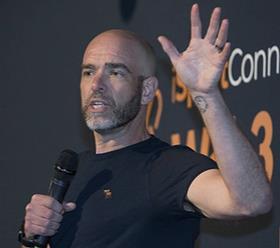Matt Stagg explains why micro-audiences aren’t a detour from the main event, they are the main event

For decades, the playbook for sports broadcasting was crystal clear – attract the biggest audience possible, deliver the same experience to everyone, and sell reach to the highest bidder.
But that model is showing its age. Audiences are no longer just watching — they’re curating, co-creating, and congregating in digital spaces that often have little to do with traditional broadcast. And in that shift lies the most exciting, and under-leveraged, opportunity in the industry today, which is micro-audiences.
The next wave of growth in sports media won’t come from adding polish to the top-tier of elite events. It will come from serving highly engaged, highly specific fan communities with content experiences built around them, and not just repackaged for them.
Let’s be honest, fans today don’t think in time slots or broadcast channels. They follow players, styles, formats, creators and causes. They watch on their own terms, in their own language, with commentary that reflects their personality or peer group. They don’t want to be spoken down to, they want to be in the conversation.
This isn’t just about young fans, either. It’s about identity and affinity. It’s about finding a sports experience that feels personalised and relevant, whether that’s a tactical breakdown, behind-the-scenes vlogs, data-rich overlays, or community-led watch-alongs.
This shift means that audience size is no longer the only metric that matters. Engagement, cultural fit, frequency, spend, and emotional connection are proving just as powerful, if not more so, than raw viewership.
Just a few years ago, reaching these smaller communities with meaningful, high-quality content was often dismissed as economically unviable. But that logic no longer holds.
Cloud-based production, AI-assisted editing, remote workflows, and multi-platform distribution mean the cost of creating and delivering professional-grade coverage has collapsed. You can now stand up dynamic, tailored, live experiences for a fraction of what it used to take, and do it in a way that feels native to each audience.
Micro-audiences are:
- More likely to watch full matches, not just highlights.
- More inclined to subscribe or donate directly to the team or league.
- More open to sponsor messages that feel relevant, not generic.
- More vocal and influential in driving peer-to-peer growth.
In some markets, entirely new viewing formats are emerging, which are built for mobile, with alternative commentary, tailored for local context or fan personality types. Creators are being brought into the production process not as influencers, but as authentic extensions of the content layer.
Micro-subscription models are surfacing, with fans choosing to pay for direct access to content built specifically around their interests or communities.
What’s more, sponsors are increasingly leaning in, looking for more targeted, measurable, culturally relevant opportunities that go deeper than perimeter boards or 30-second spots.
This isn’t a pivot away from the big broadcast moments. But it’s a clear signal that the next major breakthroughs won’t all be coming from the top down.
To seize this opportunity, broadcasters and platforms need to shift their mindset. The role isn’t just about delivering to the masses. It’s about facilitating the conditions for meaningful connection, at every level of the pyramid.
Broadcasters have the reach, the expertise, and the infrastructure to lead this. But doing so means shifting from centralisation to enablement, and accepting that control is no longer the currency. Relevance is.
Micro-audiences are not a detour from the main event, they are the main event for a new generation of fans. And they represent a rare thing in today’s media landscape – a true greenfield opportunity.

Matt Stagg is a strategic advisor and technologist







No comments yet